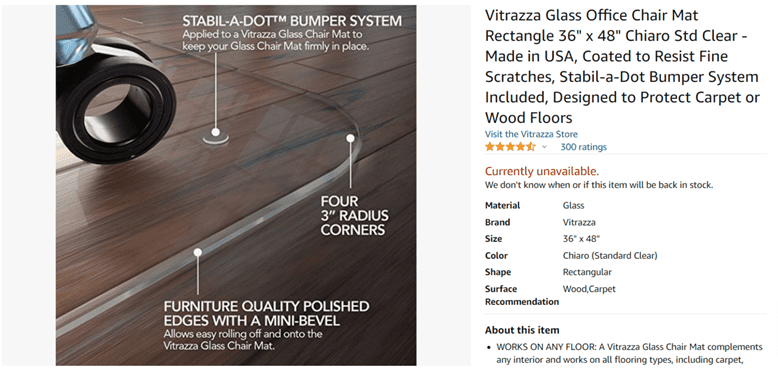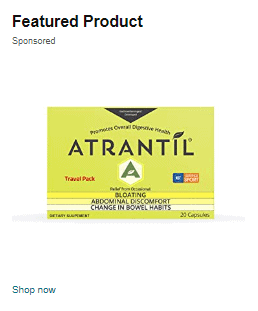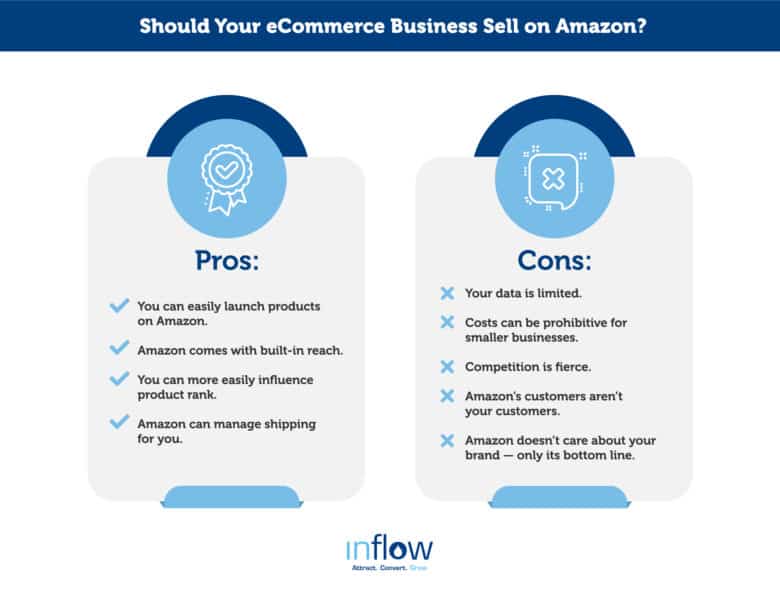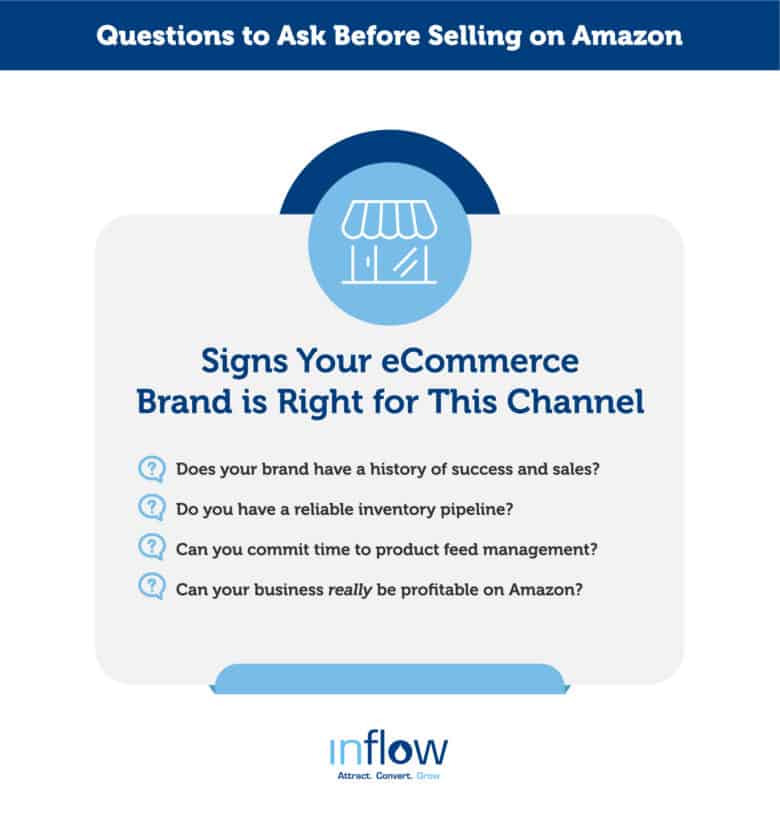In 2021, Amazon surpassed Walmart to officially become the largest retailer in the world outside of China. Thanks in part to the pandemic, Amazon now accounts for 41% of the U.S. eCommerce market, while its nearest competitor — Walmart — has only a measly 6.6% market share.
But Amazon didn’t take over the market as a monolithic retailer. Instead, it essentially established itself as the world’s largest flea market.
Today, literally millions of retailers have set up their virtual booths on Amazon, selling everything from products found in physical swap meets to custom-crafted handmade wares to exclusively sourced items direct from manufacturers. In total, these third-party sellers account for 56% of items sold on Amazon.
Given the difficulty of competing with Amazon, it’s natural to consider whether you should just set up shop on Amazon, too. While it’s certainly possible to make money selling on Amazon, it’s not the right choice for every business.
In today’s guide, we’re going to help you decide if selling on Amazon is right for your brand by explaining:
- The basics of selling your products on Amazon
- The pros and cons of Amazon selling
- And questions to ask before starting
Selling Your Products on Amazon: The Basics
If you want to sell on Amazon, the process to set up your Amazon Seller Central account is pretty easy:
All new sellers need is:
- A valid credit card
- A phone number
- Bank account details
- A government ID to verify your personal info
That’s it. You can set up your Amazon business and start selling today!
However, if you want to really be successful selling on Amazon, you’ll need to prepare for these five pillars of your virtual booth:
- Product listings
- Paid advertising
- Shipping
- Customer service
- Brand registry (if applicable)
Managing these pillars will help your Amazon booth become a profitable eCommerce outlet. That’s why we recommend learning more about them (and creating a plan for each) before you set up your Amazon seller account.
Product Listings
Product listings show off all the wares you have to sell on Amazon.
Amazon doesn’t really limit the number of different products you can list, and it doesn’t even start charging you for inactive listings until you have more than 100,000 SKUs. However, that doesn’t mean you should fill your booth with all the slapdash listings you possibly can.
To be successful, you’ll want to optimize your product listings to show up in searches and convert potential buyers. So, you should limit yourself to only the products that are worth the effort.
A product listing should include:
- Title
- Product features
- Product description
- Search terms
- Images
- Video
- A+ content (if you’re a brand registered seller)
- Dimensions and weight
- Price
- Product category
Not all of these are required — but the more of these items you include, the better.

A+ content is only available for brand-registered sellers. This means that you’re either the manufacturer of the product or their exclusive distributor on Amazon.
Managing your product listing is basically the equivalent of SEO for an eCommerce website. You will want to constantly monitor, update, and optimize your product listing.
You’ll also want to make sure you have your inventory management down. You can’t make sales for products you don’t have, and if you try, Amazon will penalize you.
Paid Advertising

If your product listing is your SEO, then paid advertising on Amazon is your PPC.
Ads on Amazon are easy to manage. You can either choose the terms you want to show up for and manage your bids on each term individually or let Amazon manage them for you. A good bid strategy will make sure you’re showing up for enough results to generate sales without cutting into the profit margin of those sales.
After that, you just need to make sure you’re managing your product feed properly. Amazon makes this easy for you. Because it’s a closed system, the platform will automatically stop showing any of your items that are out-of-stock (OOS) or disapproved.
Depending on the campaign types you create, Amazon can also automatically choose the terms, categories, and product pages on which your products will be advertised. That’s why it’s so important that all the information in your product descriptions is as accurate and as detailed as possible (Amazon uses the fields in its automatic campaign placements).
Shipping
When you’re selling products on Amazon, you have to choose a shipping method. You can choose either fulfillment by Amazon (FBA) or fulfillment by merchant (FBM), i.e. you.
With Amazon FBA, Amazon handles the packaging and shipping of products from its warehouses. This costs more, but it comes with several benefits.
Of course, you wash your hands of all the hassle of shipping products to buyers. However, when you use FBA, your products also qualify for the same shipping incentives as Amazon’s own products. This means free shipping to Amazon Prime members and non-members who meet the order value threshold.
FBM means you manage shipping yourself. When an order comes in, you send it to the buyer. This can be more profitable if you already have well-developed logistics, such as a reliable drop-shipper. However, the lack of shipping incentives can be a big hurdle to overcome with customers.
Amazon also offers Multi-channel fulfillment (MCF), which lets you use Amazon warehouses and shipping to fulfill orders you receive through all sales channels (your website, Facebook, etc.). This is a good shipping option to consider if you have an established online store but aren’t happy with your current logistics.
Customer Service
Customer service is a tricky thing when you’re selling on Amazon.
For a great many eCommerce businesses reselling on Amazon, the customers you get there are not in actuality your customers. They are Amazon’s customers, and your ability to manage a relationship with them is limited. Amazon doesn’t want your private label remarketing to these customers or building a relationship with them.
It’s a little different if you’re a brand registered seller (more on that below). In this case, you have some degree of relationship with your customers on Amazon, and you should definitely do all you can to improve their loyalty.
Regardless, Amazon has expectations that all sellers provide optimum customer service. Whether you are a third-party reseller or a direct-to-consumer brand, there are several benchmarks you’ll need to monitor, including late shipment rates and response time to customer messages.
Fortunately, there are ways to set up your Amazon store to be flexible with shipping and still meet the platform’s standards. For example, keeping on top of your shipping schedule and holiday weekend settings will allow you to maintain a good account health score over three- or four-day weekends.
Amazon also takes some of the decisions about customer service (like return policy) out of your hands.
All that said, failure to live up to Amazon’s customer service standards can lead to penalties up to and including a ban from the platform.
Brand Registry
If your store is eligible, enrolling in Amazon’s Brand Registry program gives you more control over your brand and your customer experience.
The program gives you access to:
- A+ content
- Sponsored, branded ads
- Free multi-page Amazon store
- Expanded brand analytics
- New seller incentives
By registering, you’ll be able to more directly build your own brand awareness (not Amazon’s) in association with your product lines and customer service — growing your customer base, even if they’re shopping on this platform instead of your eCommerce site.
Should I Sell on Amazon?
Now that you know how to sell on Amazon, the question remains: Should your brand sell on Amazon?
For many retailers, Amazon represents a necessary evil. It’s an entry point for many eCommerce entrepreneurs. If you’re a startup with little upfront capital, selling on Amazon can be an efficient way to kick off your venture.
But, if you already have an established online business, is selling on Amazon worth it? You might be missing big opportunities, but it might also be too much hassle for not enough profit.
Consider these pros and cons, then ask yourself the questions below to help make your decision.

Pros:
You can easily launch products on Amazon.
As we explained above, it’s easy to start selling on Amazon. If you already have product listings on your website, you can duplicate all those efforts on your Amazon product listings.
It’s even easier if you’re working with an eCommerce digital marketing agency. Your team can take all your SEO efforts and convert them to Amazon listings. In our experience, most retailers can increase their gross revenue within 60–90 days, using a reasonable advertising budget on Amazon.
Amazon is also a great place to launch new products by helping you see if there is currently demand or a market for the product you’re launching.
Amazon comes with built-in reach.
Amazon gets billions of visits every month. Many online shoppers start their shopping on Amazon, and there are some Prime members who shop almost nowhere else. Therefore, selling your product on Amazon is the only way to reach these shoppers.
Plus, Amazon listings can rank high in Google searches, so this gives you another way to take up real estate on the SERPS (search engine results pages).
You can more easily influence your product rank.
Amazon rewards its most successful booths with better product ranking and other benefits (like more space in the warehouse for Amazon FBA sellers).
You can influence your rank by using Facebook and Google Ads to send traffic to your product listings on Amazon. This leads to more traffic and more sales, which will improve your product rank and help you get better sales within the closed loop of the Amazon marketplace.
Amazon can manage shipping for you.
If you choose FBA, Amazon can easily manage your packaging and shipping using Amazon’s fulfillment centers. This not only saves you the hassle of shipping to those customers but also gives you additional benefits within the Amazon ecosystem.
Your items qualify for free shipping to Prime members, plus free shipping when non-Prime shoppers meet the threshold purchase requirements. Free shipping is a big incentive, and it can lead to more sales for your products.
Plus, with the chronic shipping delays plaguing eCommerce, using FBA puts the blame for delays on Amazon, not your brand.
Cons:
Your data is limited.
Amazon collects tons of data about customers that come to its site. However, it gives very little of that data to you. That’s because it considers these customers its own, not yours.
Amazon advertising doesn’t retain any historical data older than two months old. So, unless you partner with a third-party ads platform, most of your advertising data will be inaccessible to your team.
With limited data, it’s difficult to track how much of your Amazon sales may be cannibalizing your website sales.
Typically, expanding to Amazon leads to an increase in gross revenue. However, this doesn’t always translate into an increase in profits, and Amazon’s stingy approach to metrics makes it hard to figure out why.
The costs can be prohibitive for smaller businesses.
Selling on Amazon comes with costs. There are selling fees (usually charged on a monthly basis), referral fees, advertising fees, listing fees, refund administration fees, and possible FBA fees. If you aren’t moving all your merchandise fast enough using FBA, you can incur punitive storage fees and long-term storage fees, too.
If you have high-volume sales, you can still be profitable — but for many struggling small businesses, these costs can eat up your margins, especially in crowded verticals.
Your competition will be fierce.
With about two million sellers on Amazon, there can be cutthroat competition for sales. If you’re in a saturated vertical, it will always be a race to the bottom, with sellers trying to undercut each other for the lowest price.
There are numerous anecdotal reports of competitors on Amazon using dirty tricks to sabotage rivals, though few are confirmed.
Perhaps the dirtiest fighter of them all is Amazon, which always gives itself the inside track to the buy box. It’s hard to be profitable selling any item once Amazon decides to sell it.
They are not your customers.
We’ve said it before, and we’ll say it again: When you’re selling on Amazon, you are selling to Amazon customers, not your own.
(To be fair, Amazon has a lot of customers, so that might not be a problem for you.)
However, because Amazon restricts the data it gives you, it’s very difficult to create and maintain your store’s brand on Amazon. As a seller of your own branded products, you might be able to build customer relationships, but Amazon makes this very hard for resellers.
Amazon also doesn’t want you to remarket to its customers, so it can be hard to justify using your social media and Google advertising investment to increase Amazon’s customers.
Amazon doesn’t care about you.
Amazon is concerned about its bottom line, not yours. As long as Amazon thinks your success feeds into its profits, it will encourage your efforts.
However, once Amazon decides it will be more profitable to undercut you by selling the same or a competing product, it will do so.
Plus, Amazon makes it hard to get help if competitors target you with underhanded tactics. It also favors its customers, even if they’re making unreasonable demands that can put a strain on your business.
Questions to Ask
Rather than ask if Amazon is right for your brand, ask yourself: Is my brand right for Amazon?
These four follow-up questions should help make the answer to the first one clear:

Does your brand have a history of success?
As a general rule, Amazon won’t save a sinking ship. That’s not their business. Their business is in promoting successful products and taking a rake from the profits.
If you’re an independent brand, you should have already built a steady stream of buyers using your own website, a Facebook store, an Etsy store, or other channels. You should also have a sense that there is untapped demand for your product.
Only after you’ve done that can Amazon help you tap into that demand to improve your profits.
Do you have a reliable inventory?
Amazon is a great and hungry beast that must be fed.
If you can’t reasonably supply the demand of a successful Amazon campaign, you might not be able to profit from an Amazon booth. If you’re a private label reseller who doesn’t have constant inventory, either in your own warehouse or Amazon’s, you will suffer. In addition, if you have your own shipping solution, it will need to meet Amazon’s difficult standards — or you might suffer penalties that will affect your future sales.
For product manufacturers that can control their product distribution, Amazon can be a profitable channel, depending on your margins. Typically, you’ll split profits 50/50 with Amazon.
If you can sell your merchandise and be profitable under that arrangement, it’s a good business model.
Can you commit time to feed management?
Having successful products on Amazon depends on continually updating your listings. This includes adding new visuals, product details, A+ content, and user-generated content to make your product more appealing than others. These all need to be user- and SEO-friendly.
You’ll also have to dedicate time to responding to customer questions. Amazon demands prompt responses from its sellers.
Can your business really be profitable?
Most companies who are new to Amazon fail to understand their Amazon KPIs. An eCommerce website and an Amazon storefront will require different benchmarks in order to define success.
Properly recognizing your added costs for selling on Amazon and labor costs for managing your Amazon store is essential. You might see higher revenues on Amazon, but you will often see higher costs, too.
Choosing the Best Path for Your Brand
If you’re an eCommerce business owner or marketer, you must have an Amazon strategy.
For some businesses, setting up a virtual booth on Amazon can be a very profitable approach. For others, positioning themselves to compete with Amazon is the smartest approach. No, you won’t take the giant down — but with smart strategies, you may be able to live comfortably in its shade.
If your brand isn’t quite ready for Amazon or is better suited for an independent path, our digital marketing strategists can help you improve direct sales and revenue on your eCommerce site.
Request a free proposal to see what Inflow can do for you today.











0 Comments